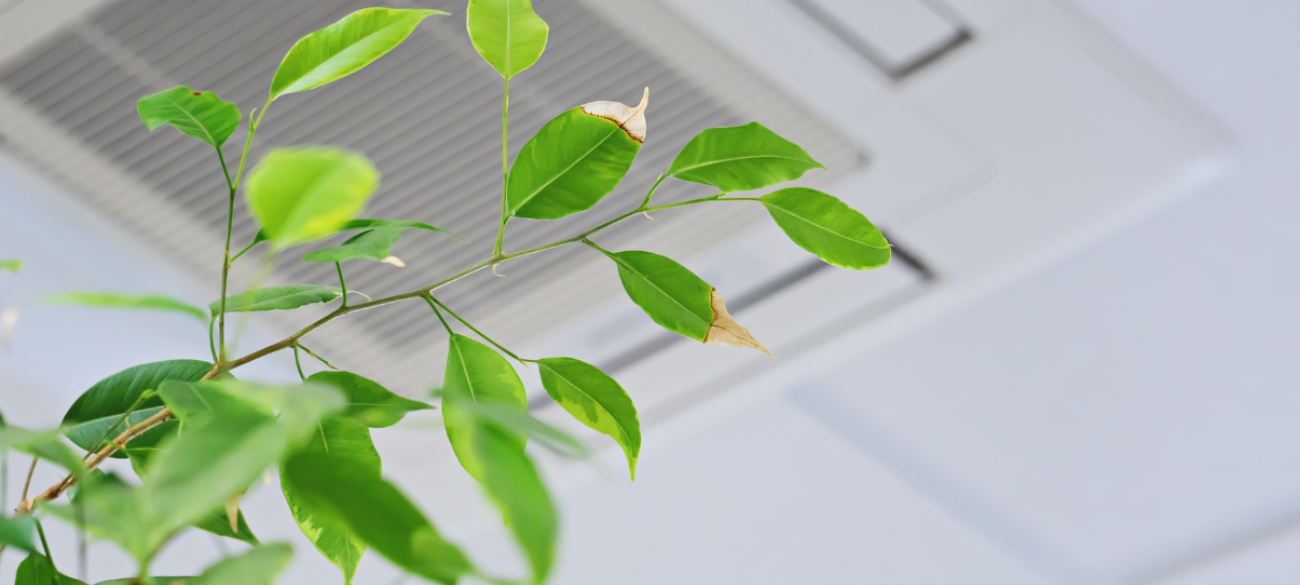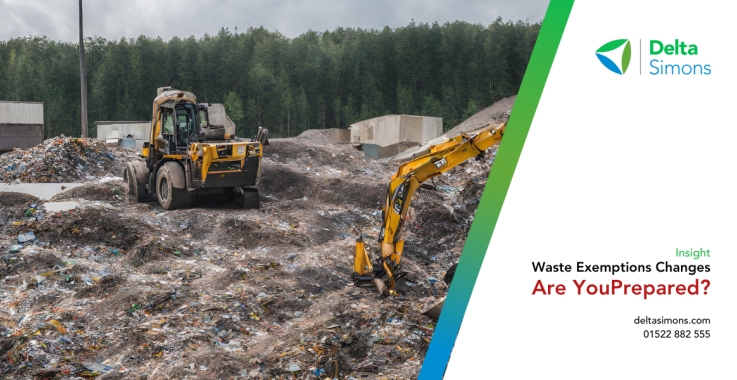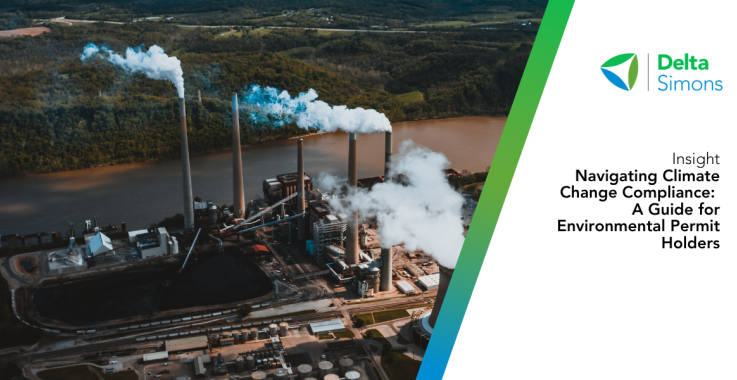Indoor Air Quality: Why Does It Matter?
14 Jun 2022
Environmental Planning
Air quality
Whilst much of the media attention is drawn toward the challenges caused by outdoor air pollution, and the resultant health impacts on communities, little is often said about the importance of Indoor Air Quality (IAQ).
On average, we spend around 90% of our time indoors, in the home or workplace environments. Consideration for IAQ is not often given or even acknowledged, which poses a challenge for managing the associated health impacts and their risks.
In our latest insights article, the second in our Air Quality: How Clean Is The Air You're Breathing series, Delta-Simons’ Senior Air Quality Consultant, Siobhan Goodman, explores the potential causes of Sick Building Syndrome (SBS) and the preventative measures you can take as an employer or building owner.
Indoor Air Quality: Why It Matters
IAQ is affected by thermal conditions and pollution with various airborne contaminants such as gaseous compounds, fine particles (non-biological) and bioaerosols, which can all negatively affect the health, comfort, and performance of a building's occupants.
Understanding and controlling these thermal comfort measures and common pollutants within the indoor environment, including temperature, relative humidity, carbon dioxide (CO2), carbon monoxide (CO), volatile organic compounds (VOCs), pollen, bacteria, mould (fungi) and virus particles, to name a few, can help mitigate against the risk of health impacts.
Sick Building Syndrome (SBS) is the term used to describe the range of adverse health effects considered to relate to the duration of time spent in a building and is seen to severely compromise IAQ. Whilst this includes the uninfluenced indoor air environment, SBS can also relate to those health effects directly caused by operational processes within a building, resulting in inhalation of dust and fumes, amongst other process-related contaminants.
These negative health impacts include headaches, fatigue, irritability, dizziness, nausea, fever, chills, difficulty breathing, rash and a runny nose. Whilst many occupants of a building may complain about at least one of these symptoms, most typically in the afternoon period of a working day, many would be unaware of the association of these with the building's IAQ and as such, limited mitigation is often in place to prevent reoccurrence. This can ultimately affect productivity in the workplace and may also lead to increased absenteeism.
Potential Causes of Sick Building Syndrome and Preventative Measures
Ventilation
IAQ challenges occur when adequate consideration is not given to ventilation requirements at the design stage of a building, for example in office spaces. Basic design decisions related to site selection, building orientation, location of air intakes and how a building will be heated, cooled and ventilated, are all critical to good IAQ.
Furthermore, employers have a duty of care to provide adequate and well-maintained ventilation within their premises, however, it is acknowledged that this needs to be balanced against the potential for occupant discomfort due to draughts and potentially associated lower indoor air temperatures.
Efficient ventilation of indoor spaces is necessary to reduce contaminants and is known to be associated with improved health, better concentration, higher levels of environmental satisfaction, lower absence and reduced exposure to pollutants.
Appraisal and monitoring of indoor spaces and consideration of their Heating, Ventilation and Air Conditioning (HVAC) systems is therefore crucial to highlight any areas where improvements can be made.
With regard to ventilation rate, a supply of ('fresh') ambient air of 10 l/s/person is recommended as suitable for most commercial buildings, which would result in maximum CO2 concentrations of 800-1000 parts per million (ppm). As a reference, average CO2 concentrations above 1500ppm when a room is occupied is an indicator of poor ventilation. Action should therefore be taken to improve ventilation where CO2 readings are consistently higher than 1500ppm.
Monitoring of IAQ, and consideration of the HVAC system and associated ventilation rate, allows for the appraisal of potential benefits to the installation and implementation of CO2 monitors in the indoor space.
A poorly ventilated building provides no escape for air pollutants and is a major contributor to the onset of SBS. Recommendations to utilise openable windows and to use and manage the HVAC systems effectively within a space hold great merit in mitigating against the build-up of contaminants and are often the first steps in promoting better IAQ.
Biological Contaminants
The presence of bioaerosols in the indoor environment is often due to dampness, water stagnation and inadequate ventilation within the building. Excess moisture on indoor surfaces can lead to the growth of mould, fungi and bacteria, which subsequently emit spores, cells and VOCs into the air, to be breathed in by occupants, with the potential to cause various infections and toxicosis.
Pollens, on the other hand, are often carried in through open doors or windows and through the occupant's shoes and clothing. Inefficient ventilation and poor maintenance of the HVAC filters can lead to the accumulation of pollens, causing potential allergies to occupants of a building.
Most bioaerosols often favour warm and humid environments, and so monitoring of temperature and humidity levels within an occupied indoor space can help mitigate against the onset of these contaminants, whilst also measuring the parameters that indicate good occupant thermal comfort.
The most unfavourable conditions for microorganisms are considered to be when relative humidity levels are between 40-60%, however, efficient ventilation is still known to be the most effective mitigator.
Indoor Chemical Contaminants
Many people are aware of the sources of outdoor (ambient) air pollution, road traffic emissions for example, but few would consider that being indoors would have its associated IAQ risks, with the respective sources potentially leading to the onset of SBS.
Concentrations of VOCs are consistently higher indoors and are emitted by a wide array of household products and furnishings, either during use or whilst being stored. As such, consideration needs to be given to these products within a building, to mitigate against the onset of SBS symptoms from exposure to these chemicals.
Organic chemicals, including formaldehyde, are widely used in typical household products, including paints, varnishes and waxes, as well as many cleaning, disinfectant, cosmetic, degreasing and hobby products. Other products include building materials and furnishings, office equipment such as photocopiers and printers, permanent markers, glues and adhesives.
Monitoring of VOCs and formaldehyde can, therefore, be undertaken to either establish baseline concentrations, provide recommendations for flush-out and establish the effectiveness of ventilation.
Outdoor Chemical Contaminants
Being in an indoor environment does not protect occupants from the potential risks of outdoor chemical contaminants, including nitrogen dioxide (NO2) and particulate matter (PM10 and PM2.5) from vehicle exhaust emissions, combustion products, organic and inorganic gases, asbestos and dust. These airborne contaminants can enter a building through open windows or doors, mechanical ventilation, or air conditioning systems, and so, consideration should also be given to these when assessing the quality of the indoor environment.
As a trusted provider of Air Quality Consultancy, we have extensive experience in identifying baseline IAQ measurements and providing advice and solutions, helping you to support the physical (and mental) health of your building occupants, reduce the risk of health concerns associated with indoor air pollution, and uphold or improve productivity, whilst setting you on the right path to achieving your Environmental, Social and Governance (ESG) goals.
Our highly qualified team undertakes IAQ Monitoring for a wide range of projects, including for general Health & Safety purposes, investigating the cause(s) of SBS within the workplace, supporting office re-occupancy and obtaining the relevant Post-Construction Measurement Credits under BREEAM Hea02.
Our Capabilities
As part of the Lucion Group, we deliver a full end-to-end service. From surveying, testing, and analysis of hazardous substances through to consultancy and delivering solutions.
Our knowledge of the issues surrounding the risk management and legal compliance of hazardous materials in buildings gives our commercial clients complete reassurance throughout their project, with real-time visibility of all hazardous materials and all risks. At the heart of everything we do is ESG (Environment, Social & Governance) and for Delta-Simons, success means a positive impact on people, the planet and prosperity.
Want to partner with a purpose-driven holistic environmental services supplier? Email us at air.quality@deltasimons.com.
About the Author
Siobhan Goodman BSc (Hons), MSc, AMIEnvSc
Senior Consultant - Air Quality
As a Senior Air Quality Consultant for Delta-Simons, Siobhan regularly prepares detailed road traffic and industrial emissions dispersion modelling assessments for a wide variety of projects across the UK including residential, commercial, education and industrial developments.
Siobhan also undertakes Indoor Air Quality Assessments, comprising on-site monitoring of common pollutants and key thermal comfort measures that have potential to negatively affect the health, comfort, and performance of a building's occupants.
Siobhan has extensive experience in all aspects of Environmental Planning including undertaking diffusion tube surveys, desk-based odour assessments, and reviewing the effectiveness of the Clean Air Zone legislation and proposals. Additionally, Siobhan provides essential support to the day-to-day operation of the Air Quality and the wider Environmental Planning teams.
For further information about our Air Quality services, contact Siobhan:
Linkedin: Siobhan Goodman




